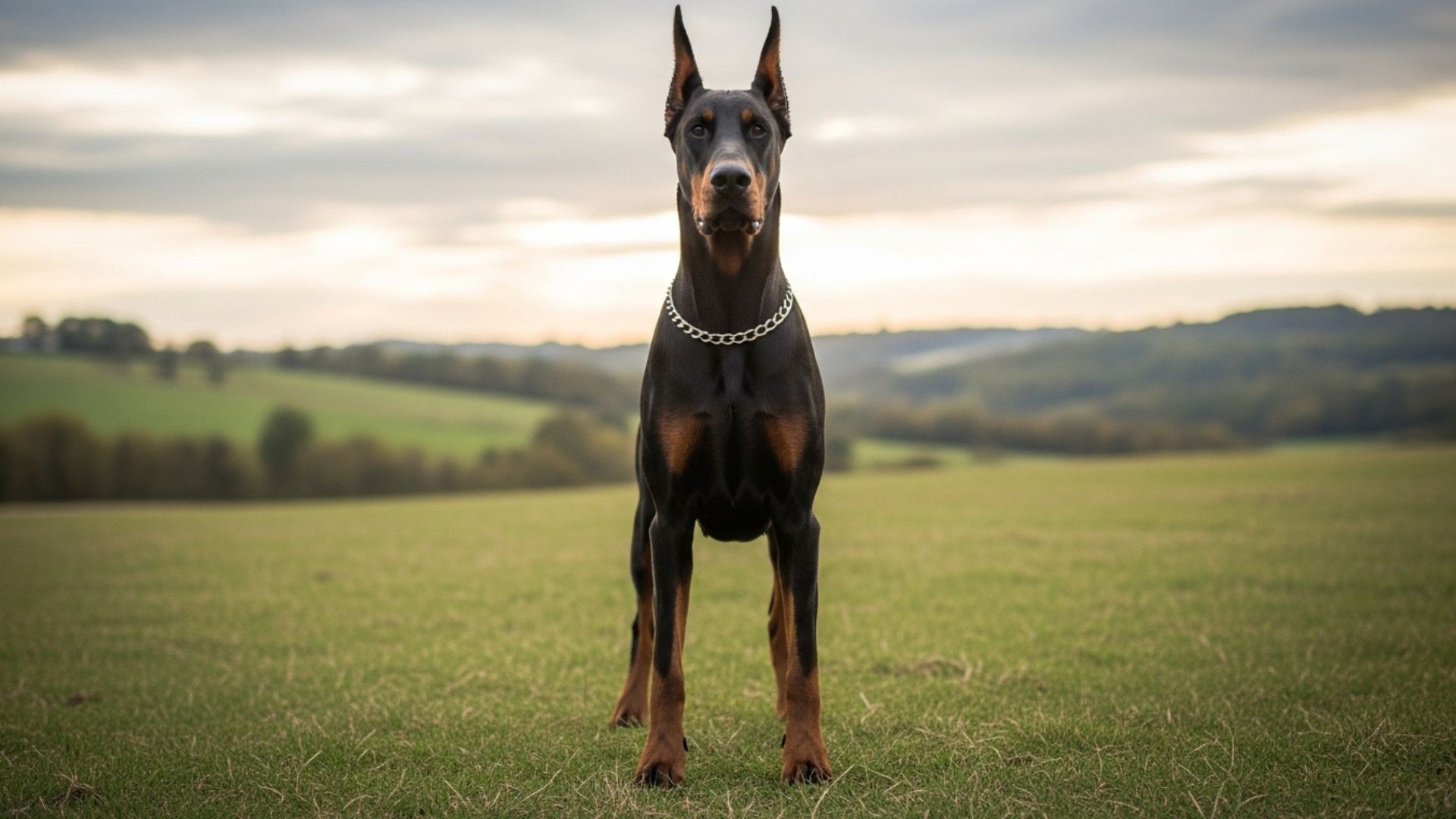Perception isn’t always reality, and that’s the real truth. We say “don’t judge a book by its cover”, but are far from following this advice when it comes to the misunderstood dog breeds. Some of the most loyal companions and affectionate breeds are the ones that society tends to fear the most.
These dogs get a bad rap for the wrong reasons. But beneath the strong, muscular build and an imposing presence is a gentle, intelligent companion who is as loving as any dog in the right living environment.
According to the American Temperament Test Society, many of the so-called “aggressive” breeds actually pass these temperament tests at a higher rate than the relatively smaller breeds, which are generally considered to be more friendly and loving.
At the end of the day, it all boils down to the training and socialization, but most importantly, the care the breed is being provided by the owner and the family. In this guide, we will dive into the most commonly misjudged dog breeds and uncover their true nature.
Commonly Misjudged Dog Breeds
1. American Pit Bull Terrier
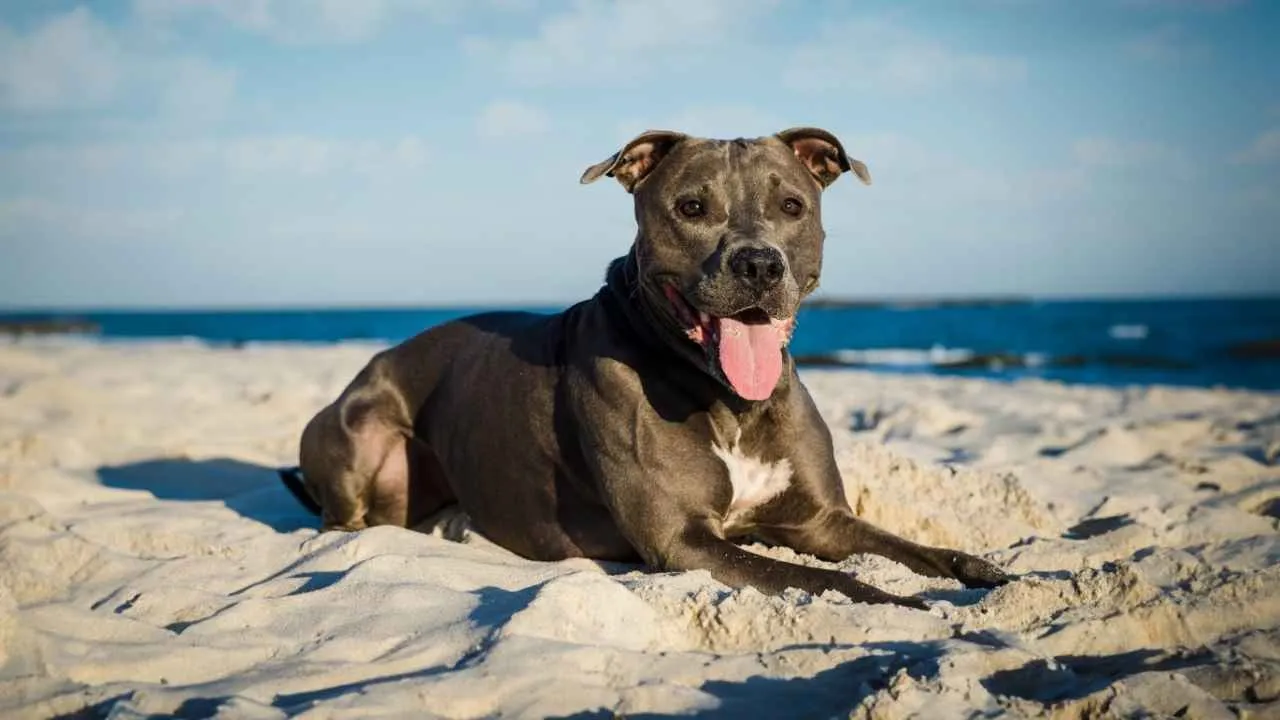
The American Pit Bull Terrier is one of the most misunderstood dog breeds in the world. It has been, for decades, a victim of the stigma and sensationalized media portrayals.
History
Originally bred in the 19th century for strength, agility, and loyalty, Pit Bulls were the ultimate family protectors. They were used as farm and house guard dogs long before they were stigmatized as dangerous or aggressive.
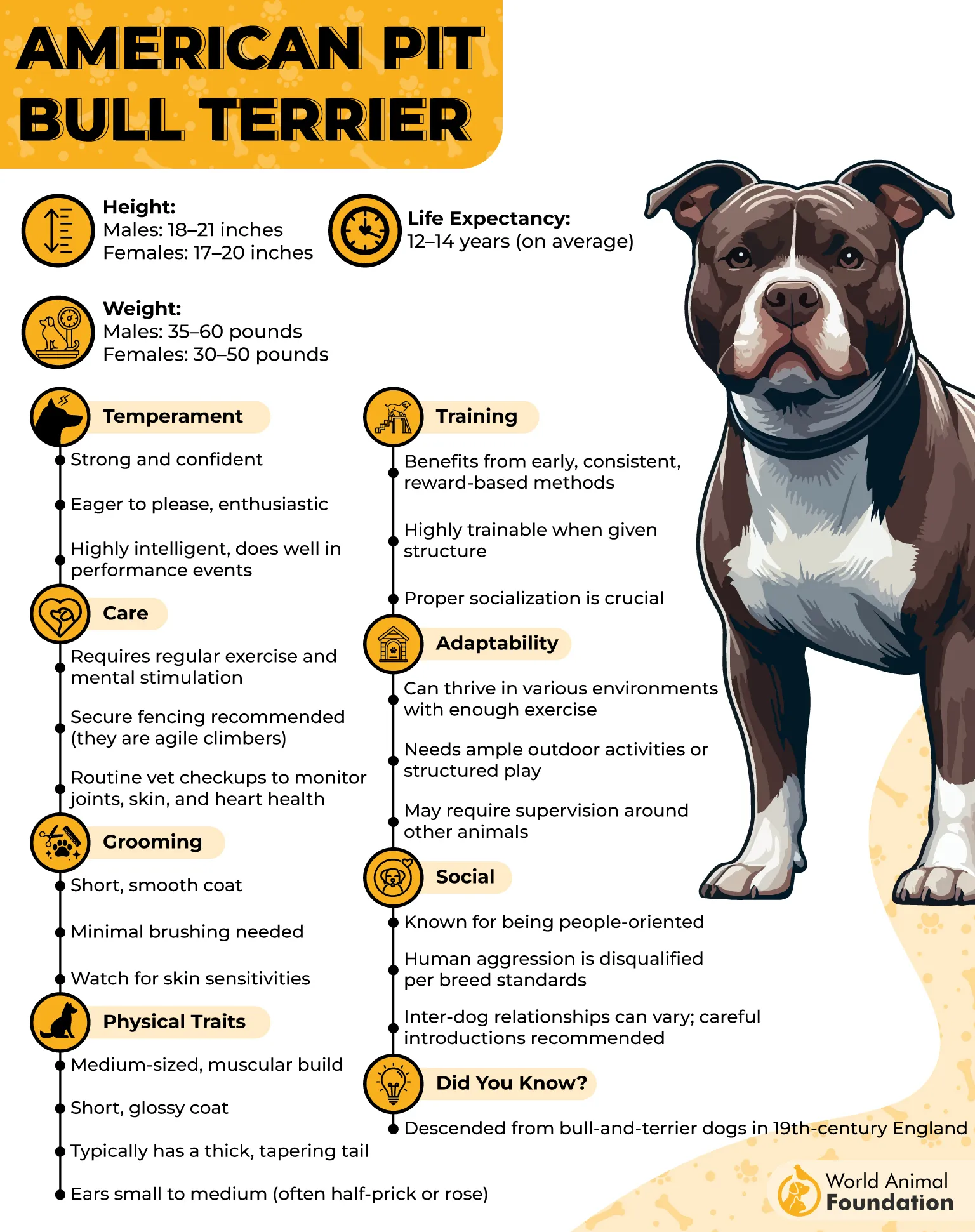
They have a muscular build and a stance that radiates confidence. By nature, they are affectionate and very people-oriented, believe it or not.
In fact, their early breeders had selected them for their “nanny dog” qualities, which include their gentle patience, protectiveness towards children, and being well socialized with family members. These traits, with the proper training provided, still shine well in Pit Bulls today.
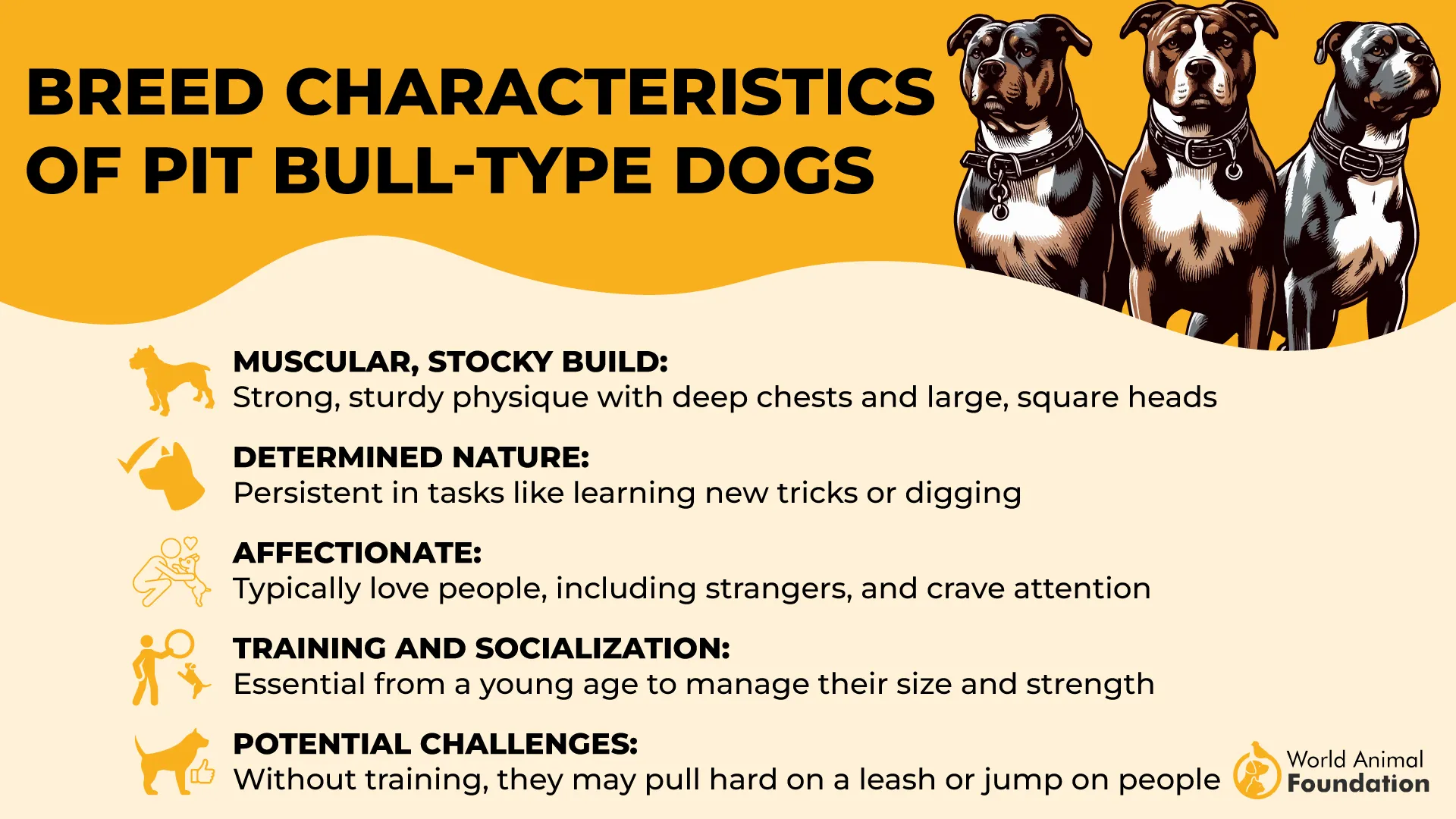
The only reason they get the tainted “aggressive behavior” reputation is because of irresponsible ownership.
With such an owner and poor training with little to no socialization, the nicest of breeds can turn aggressive, but this is really just a self-defense mechanism more than anything else. Pit Bulls are now slowly being recognized for who they are – devoted dogs who just want to belong, not fight.
2. German Shepherd
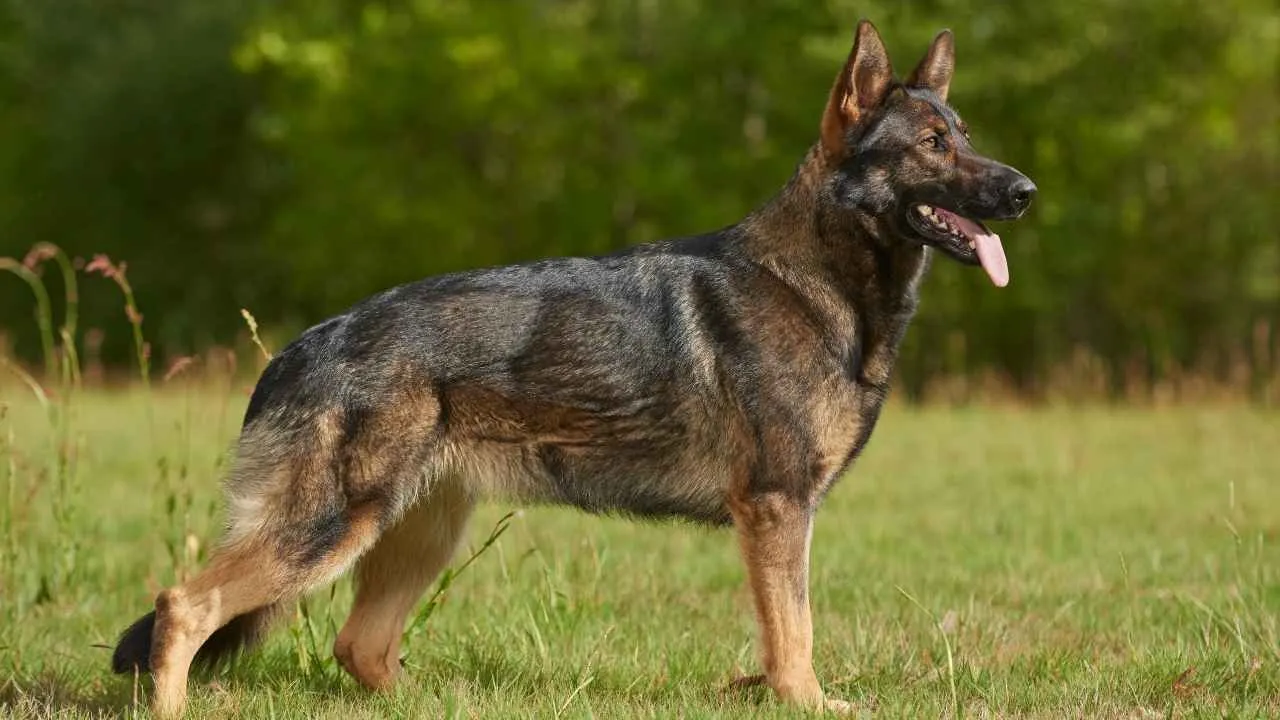
This is another breed that often finds itself caught between admiration and a greater misunderstanding. The German Shepherd is known globally as a working powerhouse due to their agility. The entire world is familiar with how highly intelligent they are.
History
Developed by Captain Max von Stephanitz to create an ideal working dog breed for herding sheep in Germany back in the 1800s, according to the AKC. It wasn’t long after these dogs were admired for their intelligence, and their abilities were proven to be very useful and resourceful in many ways.
There’s a reason they’re considered to be the most versatile compared to other dogs.
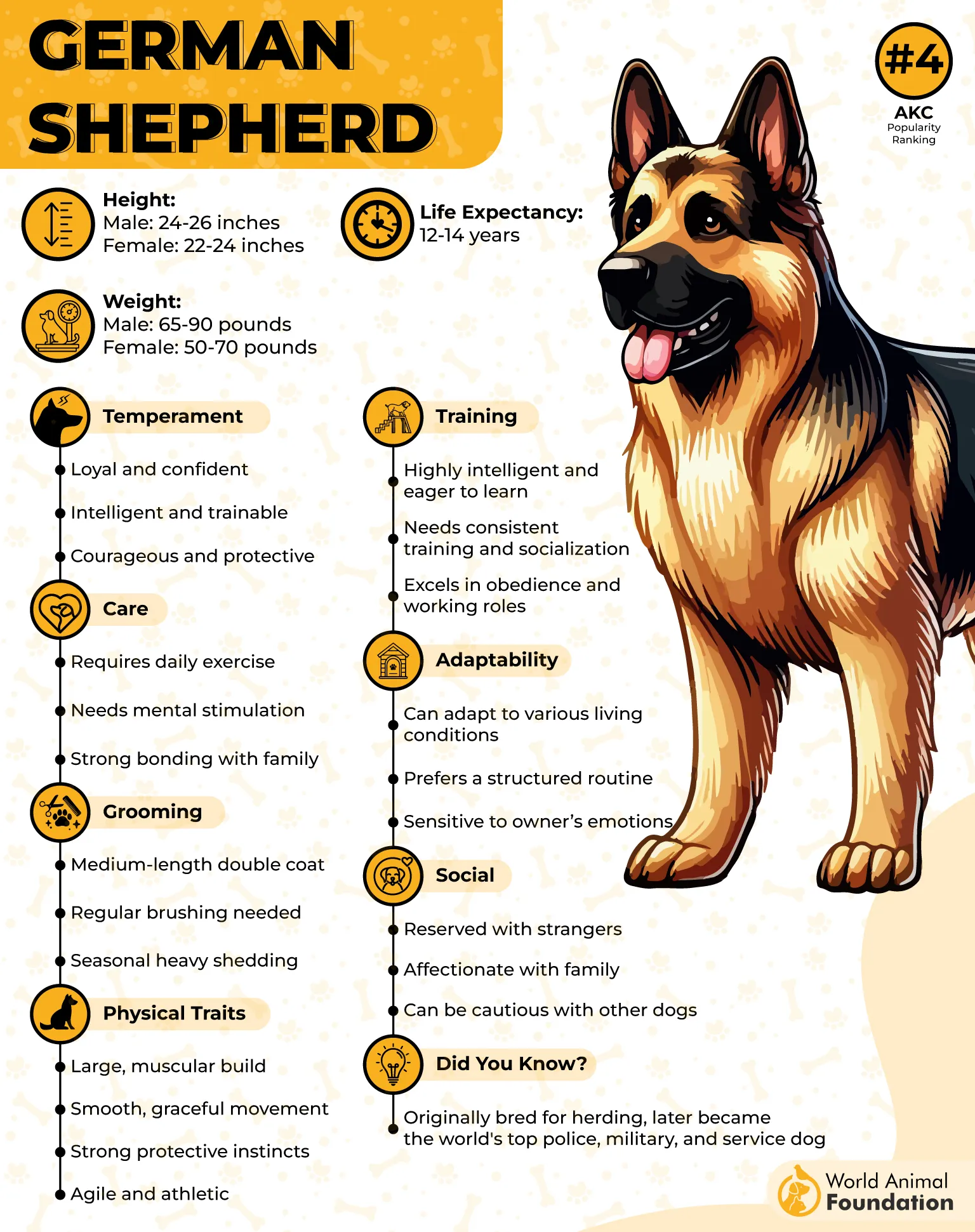
They have a history of being vocal and protective, doing military work, and also serving as police dogs. People assume they are aggressive, but they just have a really impeccable work ethic and are extremely dedicated and intelligent.
Their physical appearance resembles that of a wolf, and they are stronger than many dogs. Even with a little hyperactive German Shepherd, it is nothing a little positive reinforcement training cannot fix.
They are wary of strangers but not aggressive for no reason. Because of their courageous nature, history of police work, and dangerous careers, most people assume they are angry and aggressive overall.
They are very loyal and affectionate family pets who are just hesitant around people they don’t know.
3. Rottweiler
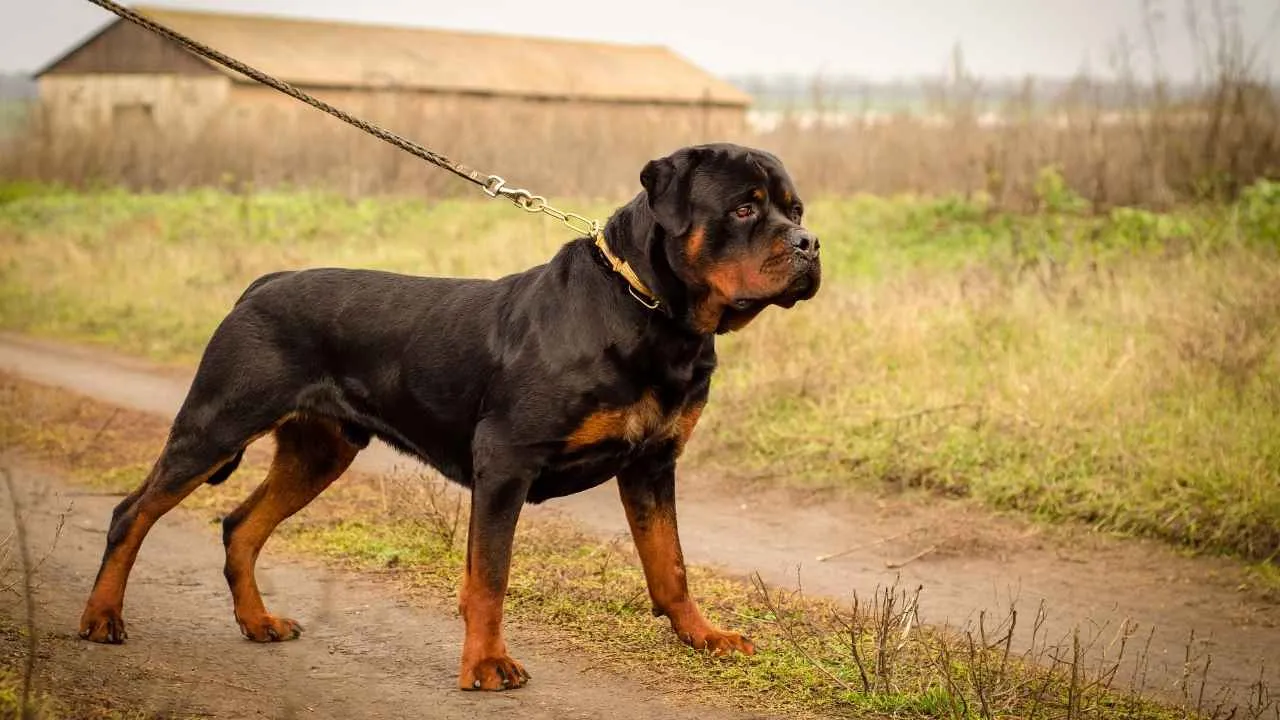
The Rottweiler is seen through the lens of strength and intimidation, and for the right reasons. It is a muscular guardian with a commanding presence, but how did this translate to them being misunderstood breeds?
History
They date back to ancient Roman times; the mastiff-type dogs were used to drive and guard cattle by legions. Eventually settling in Rottweil, Germany, they developed into the “butcher’s dog” that helped herd livestock and pull carts. After the 1900s, they became famous as police and working dogs.
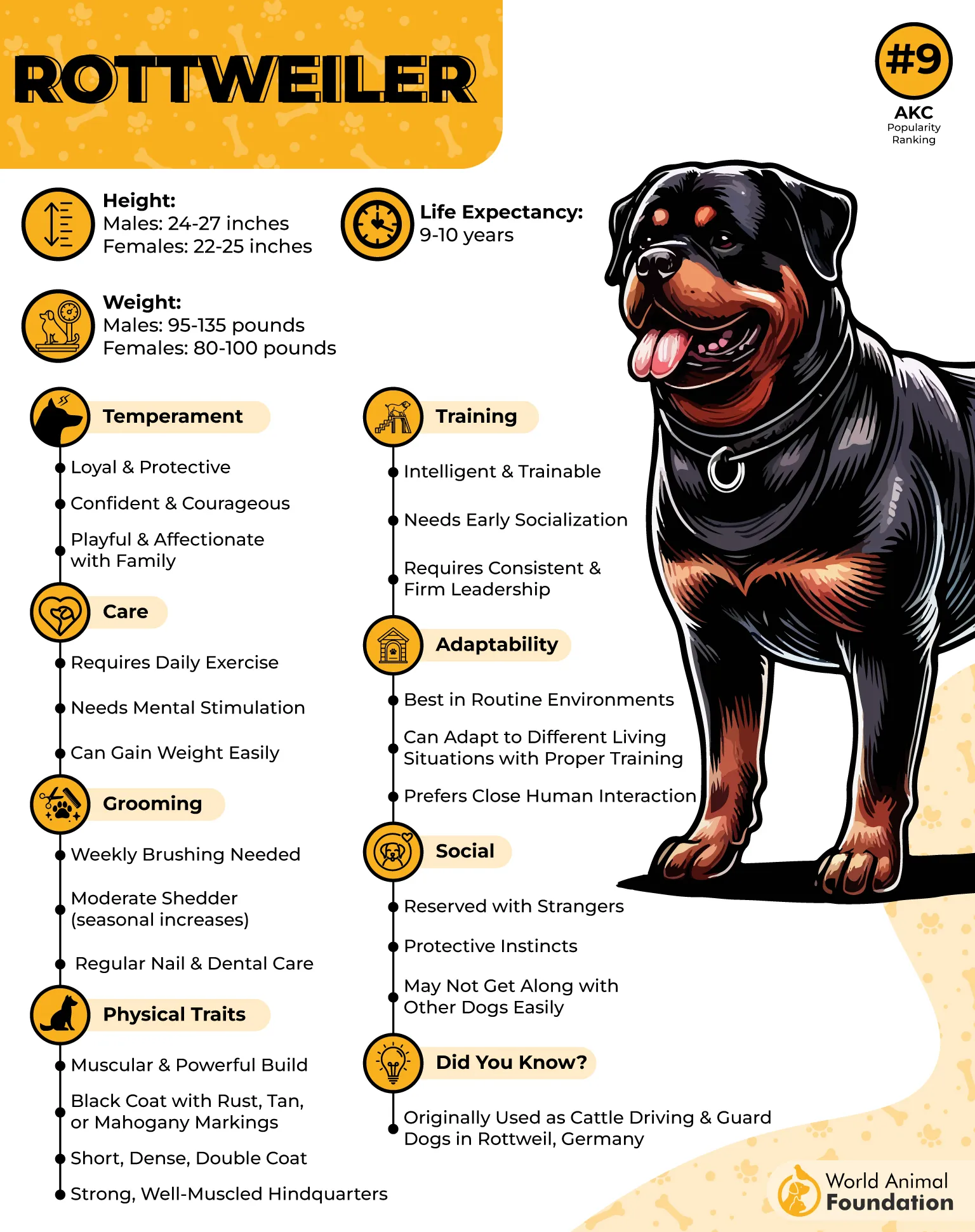
Of all the dog breeds in the world, the Rottweiler is the most misunderstood. The reason they get a bad reputation is because they are territorial and protective of their human and their family members.
With the right training and socialization, they make wonderful pets and family dogs. Their default temperament is not one of hostility but quiet vigilance.
4. Chihuahua
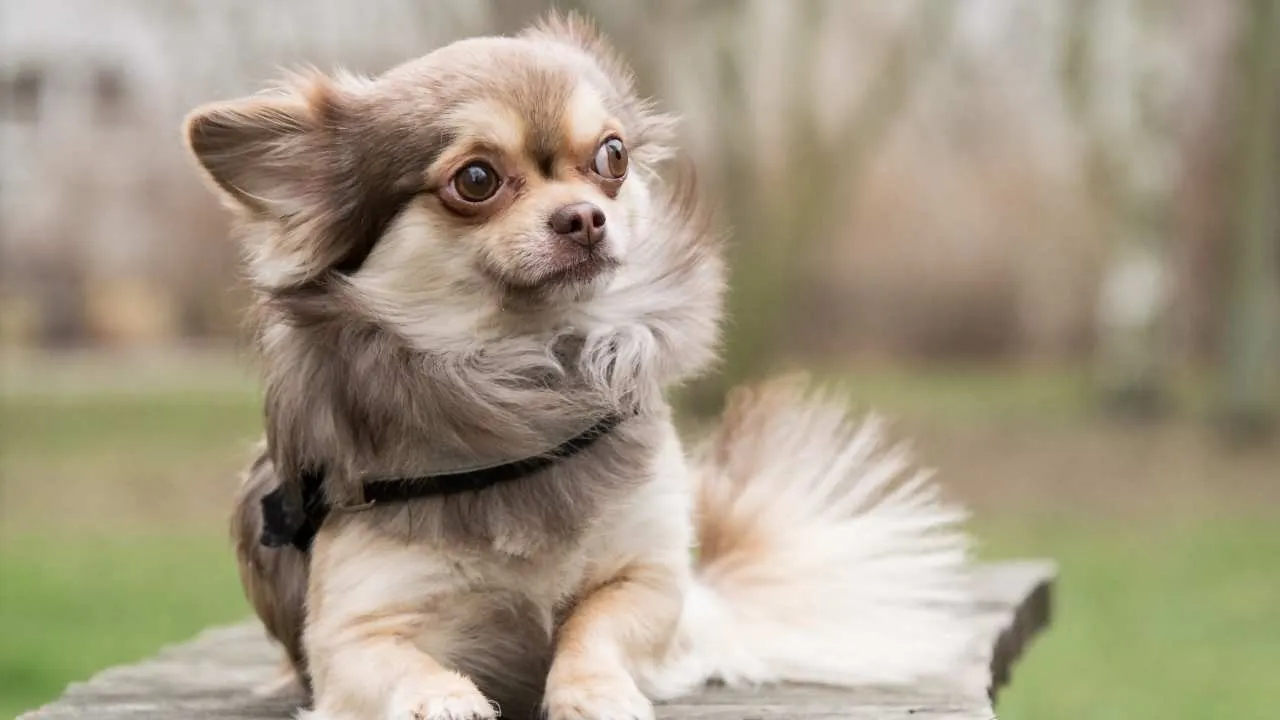
The Chihuahua may be one of the smallest dog breeds, but that is also often dismissed as yappy or overly feisty. But their personality, even vocalness, is rooted in a deep sense of loyalty and protectiveness.
History
Originating from the Chihuahua city of Mexico, from a combination of the Mexican Teichichi breed and small Asian dogs brought by Spanish conquerors.
It’s history, tracing back to the Teichichi, a small companion dog which was adored by the Toltecs and Aztecs for spiritual and practical purposes, can be seen in their personalities today.
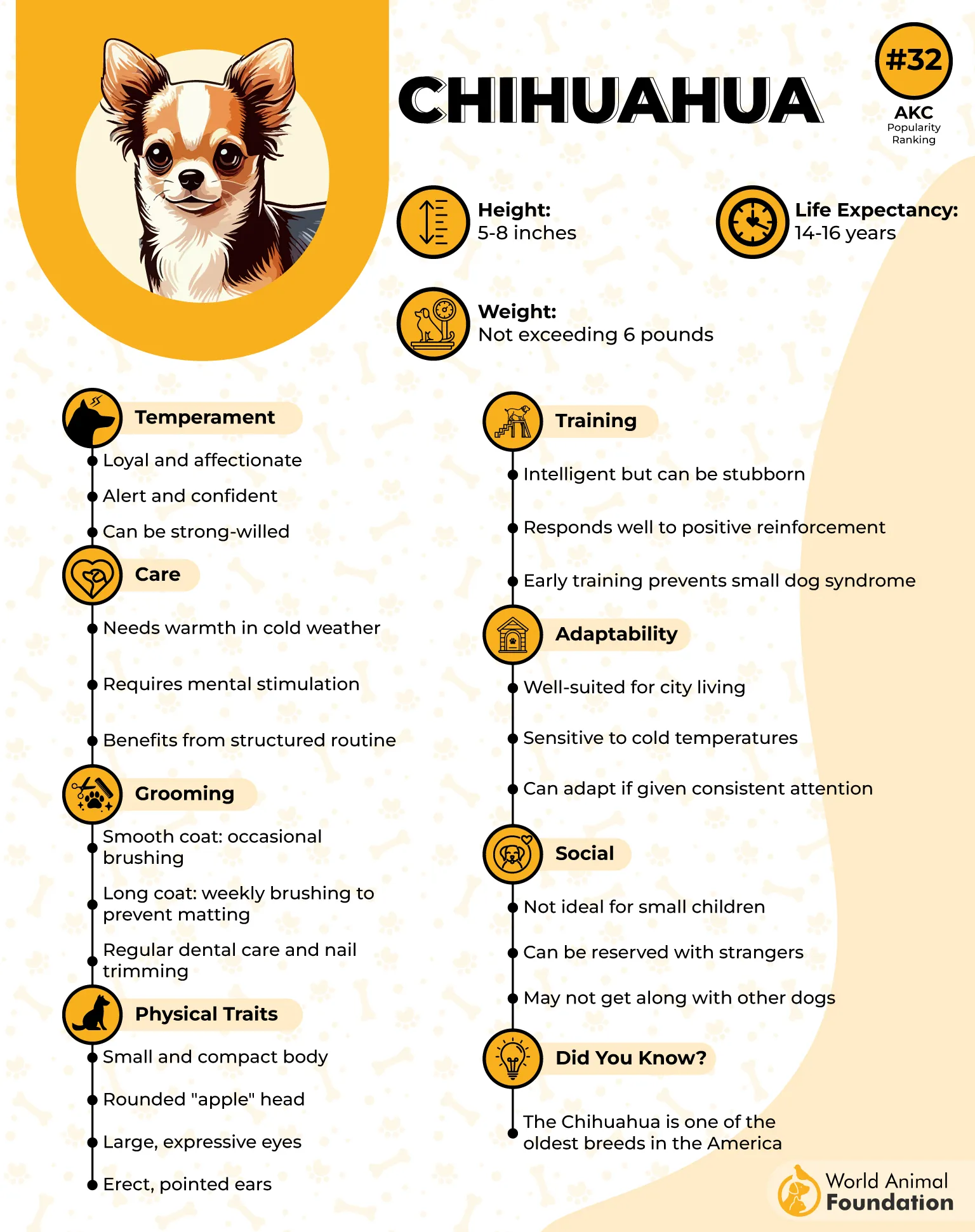
This is considered a mean breed, but it is not because they are. They aren’t aggressive, nor do they go out of their way to hurt people. They are small dogs, so unfamiliar spaces and people can make them nervous, and only if they’re not properly trained will they lash out, snap, or bite.
It’s out of fear, not mere aggression.
They need moderate exercise, not excessive, in order to remain happy and content.
5. Boxer
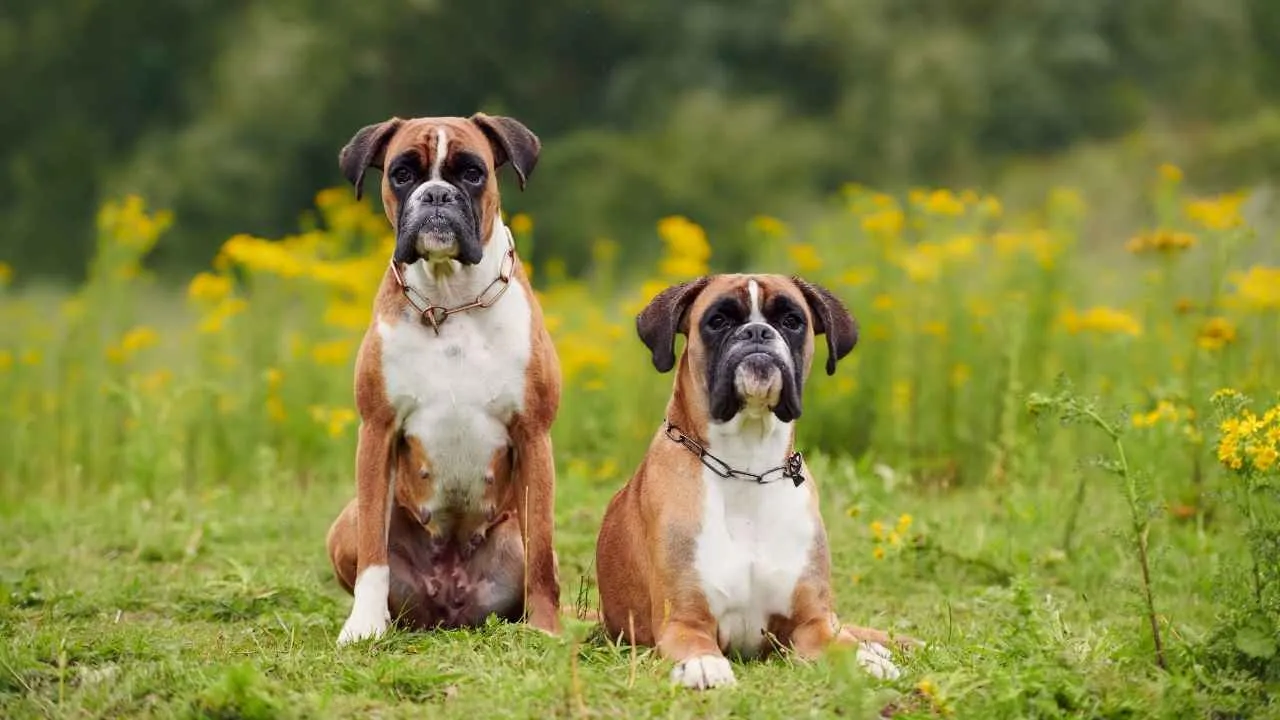
Now, this breed harbours common misconceptions because of their famous strong stance, muscular build, and alert, intimidating expressions. However, it is one of the most loyal, playful, and affectionate breeds in the world today.
History
Boxer’s history begins in the 19th century, where it was developed from the extinct Bullenbeisser and English Bulldog. They were initially used for hunting large game and controlling cattle and were brought to the US from Germany in the 1930s, as noted by PetMD.
Their name is inspired by their ability to use their forepaws like a boxer in play.
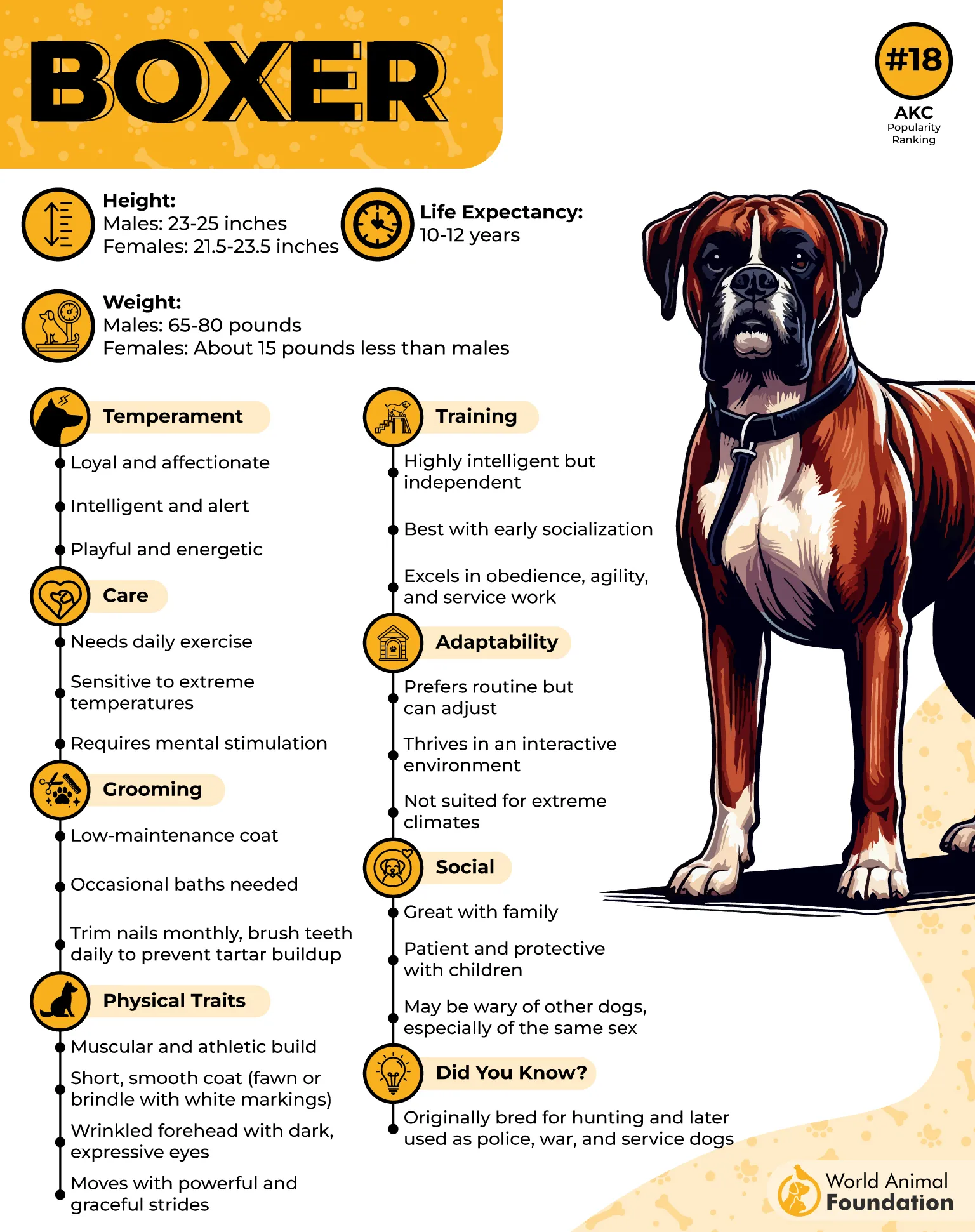
They may look tough because of their exterior, but if raised right, it is a playful breed that is full of energy and quite goofy with their loved ones. Their high energy is often mistaken for aggression, especially because they are almost always overexcited.
But with proper training and positive reinforcement, they can be taught to channel that energy into a more positive behavior. This misunderstood breed will love and protect you like no other. They are loyal to their humans if rightly socialized as pups.
6. Bullmastiff
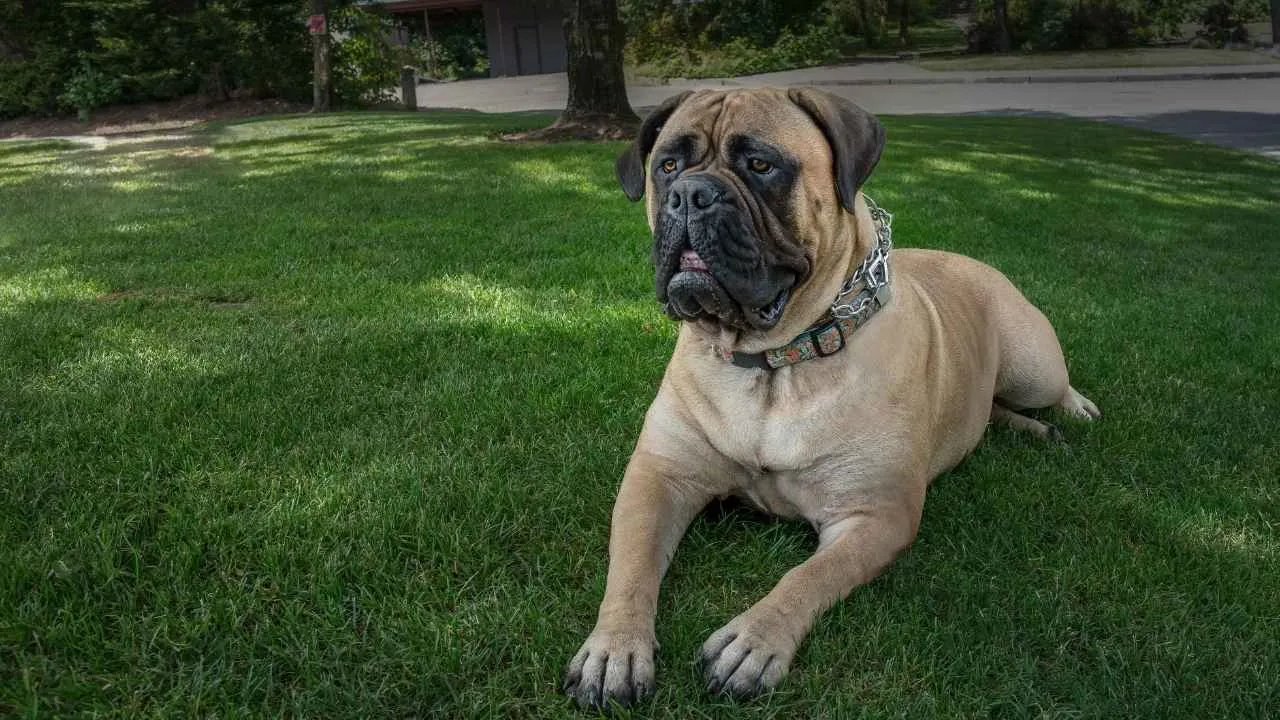
Their sheer size and power make most people think they may be violent and careless with their actions. While their looks might be intimidating, they are considered to be gentle giants that form strong bonds from an early age with their people.
History
They were bred to guard estates and deter poachers in England in the 19th century. By crossbreeding the larger Mastiff and the English Bulldog, a powerful dog was created that could quietly and silently track and conquer the intruders.
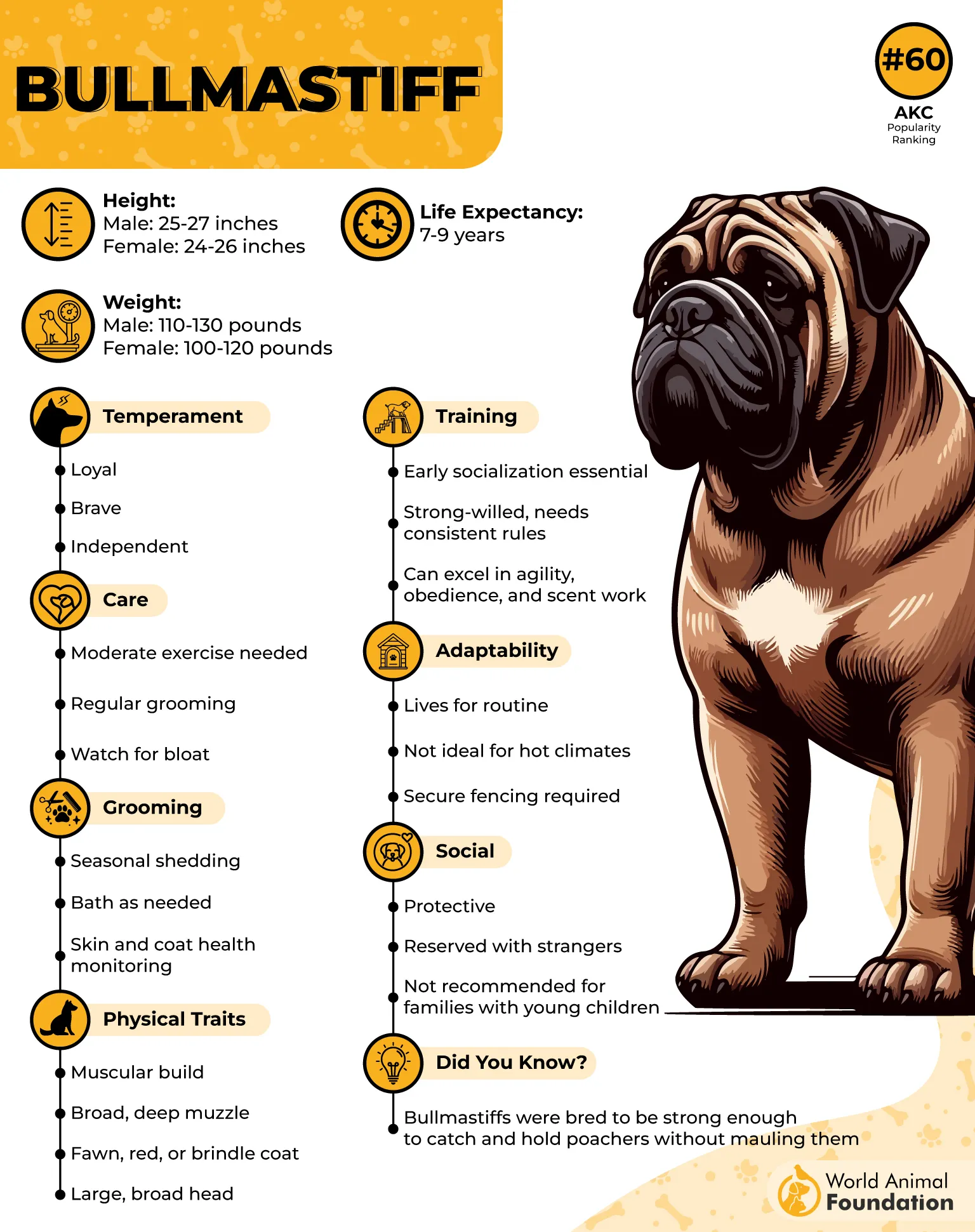
Because of their rich history, they are very protective but are also incredibly affectionate. A lapdog weighing 100 pounds requires excessive training, as per Purina.
With proper training, they are calm, patient, composed, and incredibly loyal to their families. They are deeply understanding and offer unwavering companionship, yet they’re often misunderstood; unfairly overlooked as both loyal family pets and dependable guard dogs.
7. Great Dane
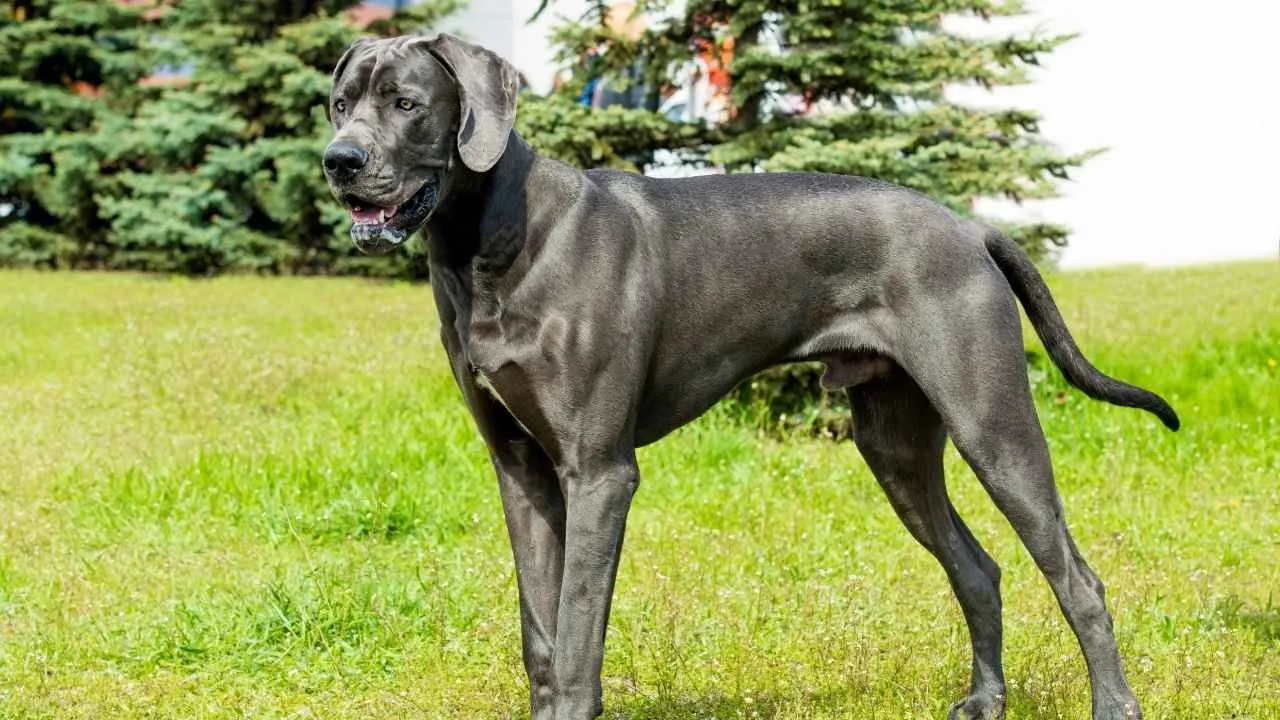
The Great Dane is often nicknamed a gentle giant. It is a perfect example of how looks can be deceiving. It has a courageous history, but that doesn’t mean it can’t be gentle and sweet where it counts.
History
As opposed to the name, this breed originates from Germany and is not Danish. In the 15th and 16th centuries, they were bred from Mastiff-type dogs and Irish Wolfhounds to hunt wild boars and are often called the “Apollo of Dogs”.
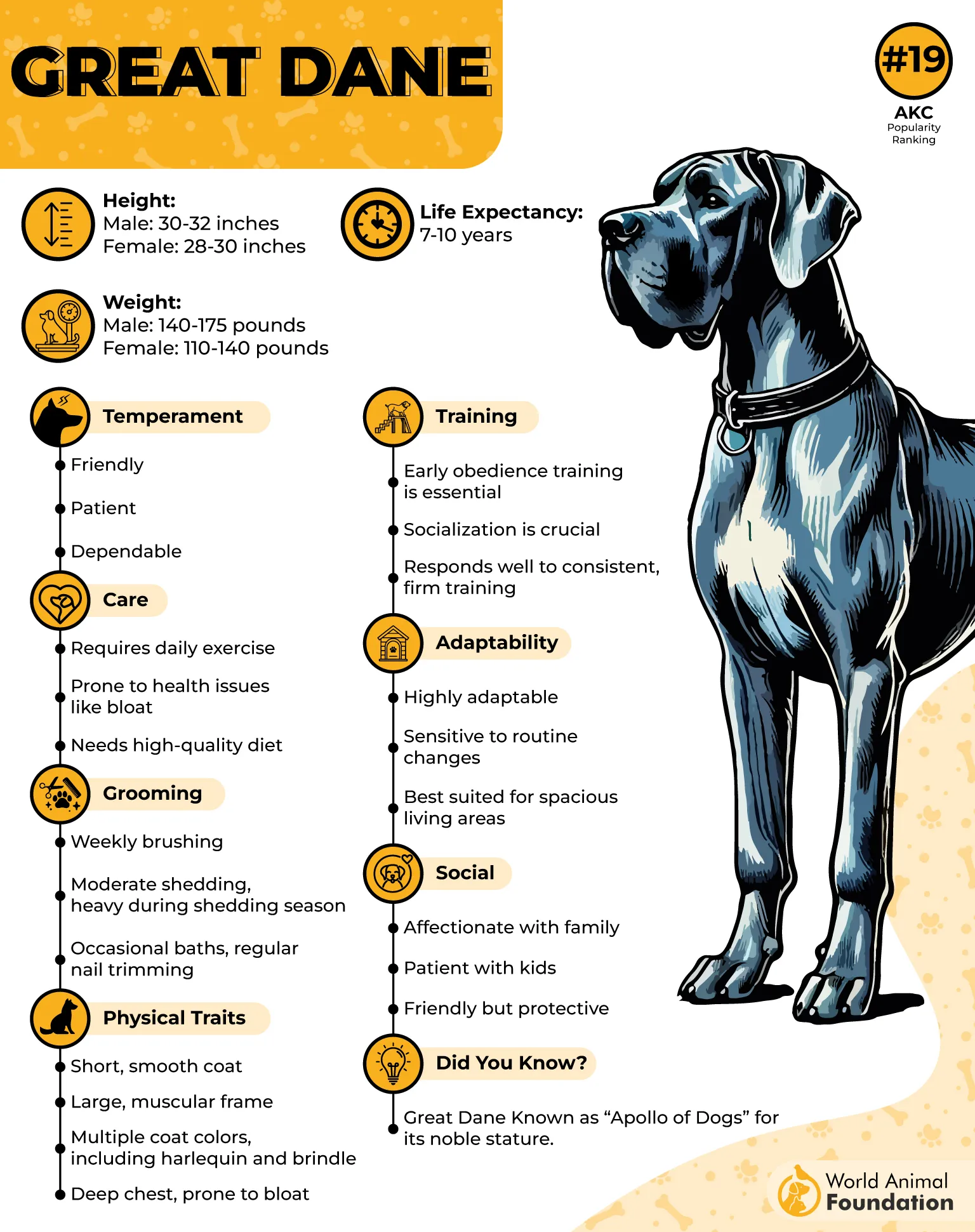
They seem intimidating, but are really a very sweet breed that feels joy just being around their owners. They are really affectionate with children, and the only thing dangerous about them is their size and ability to knock things over with just their tails.
Even though they are large in size, they are happy to lounge inside the house as well and don’t need to be outdoors necessarily.
They are people-loving and thrive on companionship. They can be raised to be remarkably docile and emotionally sensitive because they tend to mirror the energy of the house they grow up in.
They need some basic obedience training simply because of their impressive size, but Great Danes are remarkably intelligent and quick to learn, according to PDSA.
Conclusion
Let’s just say that behind every strong jaw, bark, and imposing frame is a history of breeding and not necessarily an enemy. It could be your best friend if you deal with them with understanding and love. Give them calm behavior if you expect a true companion.
Whether it’s the American Pit Bull Terrier, Rottweiler, Boxer, or any other breed, it all comes down to the strong bonds you two share that will determine their actions and reactions.


